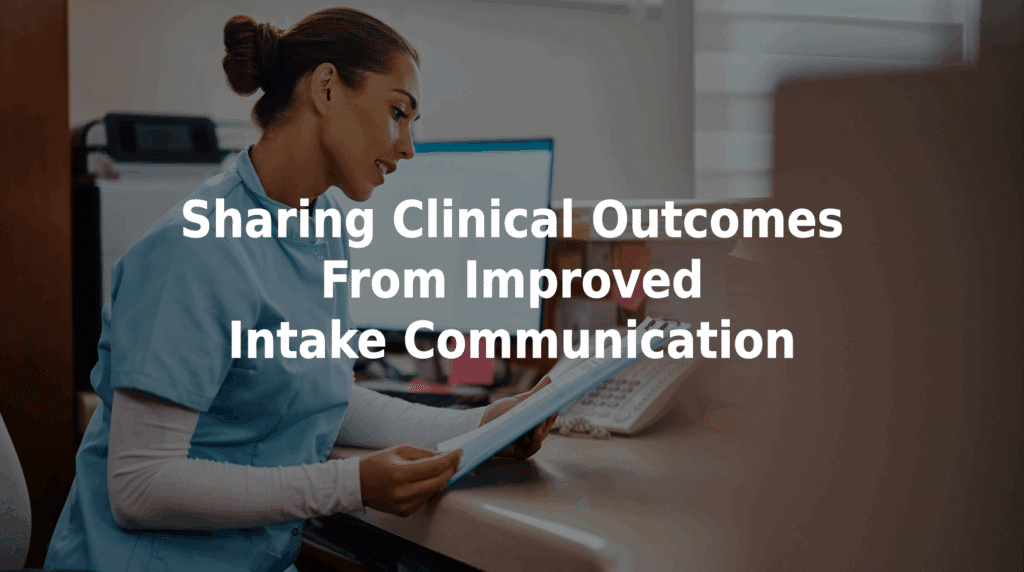Sharing Clinical Outcomes From Improved Intake Communication
Effective communication during patient intake is a critical factor in clinical success. That’s why sharing clinical outcomes from improved intake communication is essential for helping care teams understand the measurable value of the solutions that they use. For nurse managers, this often involves how well medical messages are relayed from patients to providers.
Let’s explore why intake has such a powerful effect on health outcomes, examples of how to improve those outcomes, how nurse managers can apply those insights, and more.
Why Intake Communication Affects Outcomes
Accurate intake messaging helps:
- Identify urgent symptoms faster.
- Route patients to the right levels of care.
- Support better handoffs between teams.
These result in fewer emergency visits, lower readmission rates, and improved patient satisfaction scores.
Examples of Improved Outcomes
Reduced Nurse Follow-Up Calls
When patient symptoms are documented thoroughly through an automated intake tool, nurses no longer need to call patients back to clarify their symptoms. This speeds up care decisions, minimizes delays in treatment, and avoids the risks of sentinel events.
Better Chronic Care Coordination
Structured messaging supports key health programs. Teams managing patients with conditions like diabetes or hypertension can act on accurate, real-time symptom reporting instead of relying on vague or incomplete notes.
Faster Time to Triage
Improved intake enables clinical teams to prioritize urgent requests without sifting through manual documentation or decoding nonclinical language.
How Nurse Managers Can Use These Insights
Nurse managers should regularly assess:
- Patient follow-up rates.
- Response times to urgent messages.
- Number of missed or delayed callbacks.
- Patient complaints tied to communication breakdowns.
Measuring these KPIs before and after automating intake can offer clear evidence of its value.
Best Practices for Communicating Outcomes
- Hold monthly cross-team huddles to share metrics from intake to triage and care delivery.
- Use dashboards that visualize trends and performance improvements.
- Highlight clinical wins, like averted emergencies and timely interventions, with your leadership team.
When outcomes are quantifiable, support for intake automation and training becomes easier to secure.
From Intake to Impact: Real-World Success
Healthcare organizations using automated intake platforms report:
- Over 90% documentation accuracy.
- Streamlined call flow and team collaboration.
- Happier patients who feel that their concerns are addressed promptly.
Enhance Outcomes With MedMessage Automate
TriageLogic’s MedMessage Automate promotes patient-friendly intake that’s clinically structured and highly accurate. It allows patients to self-report their symptoms through secure intake forms that populate dynamically based on the information they provide. This creates full, relevant symptom data that staff can use for better clinical review. Nurses and providers get consistent, accurate patient requests, thereby saving time (3-7 minutes per patient on average) and improving care.
Take the Next Step in Patient-Centered Care
Better intake leads to better outcomes. If you’d like to see how MedMessage Automate can offer your team measurable results, contact us to schedule a demo!

